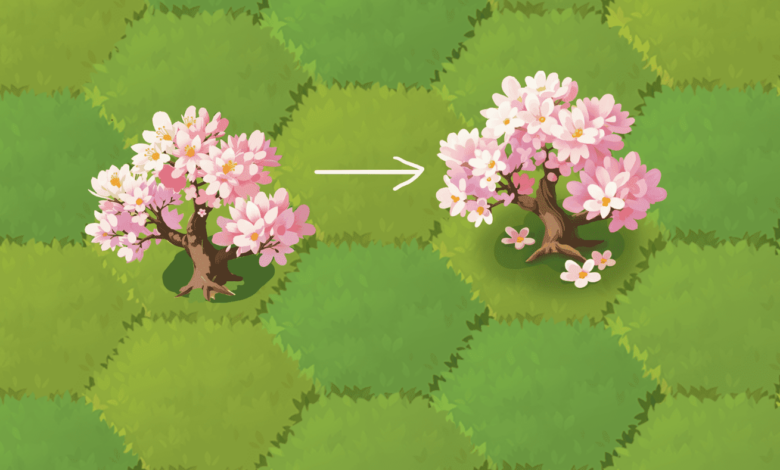
In this article, we look at the real impact of AI on video game development—where it succeeds, where it struggles, and how it’s changing the way we think about creativity.
In game development, the art department is the biggest, most time-intensive part of any project. Why? Because great art takes time.
A single realistic illustration can take an artist a month to complete. But with AI, that same piece can be finished in a week. Instead of being stuck in a production, artists can create more illustrations, experiment with styles, or even bring an entirely new comic to life.
If we break down an artist’s work, 10% is concepting and sketching, 10% is final polish, and 80% is rendering. That middle 80% is repetitive, time-consuming, and, frankly, the least exciting part of the job. AI in video games is here to take over the monotonous tasks so that artists can spend more time where their passion and talent are needed more.
How We Use AI in Art Production
Neural networks and art go hand in hand, and I’ll explain how we use them at different stages of creative production. As for the AI tools in video games production, we use Midjourney, Stable Diffusion, and LoRAs (Low-Rank Adaptation—a method for fine-tuning AI models more efficiently by adjusting only a small portion of their parameters)—they work well for stylized game graphics, not realistic images.
- References: Approximately half of them come from searches on Pinterest, and the other half from AI tools. We input some ideas and see what Midjourney suggests. We use this approach in almost all areas except UI, simply because it’s not needed there.
- Art without strict specifications and guidelines: We actively use AI in video games for everything art-related: illustrations, characters, small props, chests, icons, avatars, and various environments such as battle pads, backgrounds, and maps. For example, thematic interface backgrounds don’t have strict requirements, so we can complete them in one workday with AI, whereas manually, it would take at least a week for a senior artist.
- The collaging stage: In production, it’s 100% used for environments and splash art, especially for fan splash art, where the focus is on characters and storytelling. The neural network helps with composition, color schemes, and tonal relationships, and it can turn a rough collage into something more presentable.
- Concepts and idea presentations: AI is a great helper for presentations. For example, instead of saying, “Let’s make a design like a Miyazaki film with Dragon Age’s setting and narrative,” we show a draft presentation to help non-artist people better understand the proposal. It’s more productive than just using references.
- Rendering: Neural networks are handy to pre-render environments or background illustrations, but are less feasible for characters due to technical complexity and animation requirements. We’ve reduced the pre-rendering stage for splash art by about a quarter to a third, as AI in video games helps with composition and tonal relationships, turning rough sketches into more polished drafts. Rendering can also be sped up, but it depends on the particular image.
AI Adoption in Video Games: Challenges and Concerns
The most challenging aspect of working with AI for artists in video games is achieving specific styles. For example, if you want to draw something in the anime style, that’s understandable for AI, because it’s a popular request. So you’ll get a great outcome.
But what if we need not just a nicely drawn sketch, but one in a specific style that meets our needs? When it’s something very niche or hyper-realistic like real photos, AI сan’t handle it properly.
Of course, we faced huge AI resistance in the beginning: when the first tools appeared, artists had fear that they would be replaced. People felt confused about what needed to be done.
However, now AI skills are becoming a new competency. For example, if we hire a junior or intermediate-level artist, we assume they already have a basic knowledge of AI in video games tools because it’s sort of a must-have.
Still, AI adoption remains a sensitive topic for companies for several reasons. CEOs and team leaders are advocates for AI, but for artists, it’s different. If they talk about how they use AI in art, they risk criticism from their peers. That’s the reality.
It sounds great to producers and top management, but it might not sound as appealing to potential hires. They might think, “Oh, you use neural networks? That must mean you’ll underpay artists. I’m not joining you.” It’s a matter of reputation.
And last but not least, the use of neural networks is still in a legal gray area, and companies are cautious because they don’t know if they’ll face legal issues later.
AI Trends in the Video Game Industry
The big thing for the creative industry is speeding up production with AI. We’re not replacing manual labor entirely—whether that’s fortunate or unfortunate depends on your perspective—we’re accelerating it.
The artists are still managing the process, pulling everything together into a cohesive image, but the bulk of the work isn’t manual—it’s done with AI. This is especially true for narrative-driven games like visual novels, where you need characters and backgrounds. Neural networks excel at generating these. So, you can be a writer, churn out visual novels, assemble them in an editor, and voilà—you’re golden.
I’m absolutely sure that indie game developers actively implement AI tools. They don’t need to spend money on hiring an artist; they can create their demo and pitch it.
As for large studios and free-to-play game companies, they use AI in video games the same way and also for pitching visions and project ideas.
AI in Video Games Predictions: Will Technology Take Over?
I’m an artist who draws in my free time, so I only use AI for fun. Actually, I’m skeptical about the idea that AI will replace artists. In 2022, when Midjourney v4 was released, people thought that the quality of AI-generated content would improve so dramatically that we’d all be out of jobs in six months. In practice, however, quality is fading into the background, and it is more about quantity now.
We’ll see how AI in video games development goes, but I think it’s similar to other tools that have emerged over the years—Photoshop, or 3D. It happened before, people panicked that new tools would take their jobs, but traditional painting, photography, are all still around. AI is just another tool.
Some specialists, such as voice actors, are losing their jobs to AI. But the same thing happened with traditional craftsmen. No one is ever completely replaced until the need for a particular task, such as making stone axes, is reduced.
Professions are evolving. Life doesn’t stand still, and it happens all the time. It’s just happening faster now because the world is speeding up.
There is nothing stopping people from finding a job that is more relevant today. We no longer live in a world where you can learn one skill and never learn again. Progress has always been about automating manual labor that requires a lot of man-hours.



